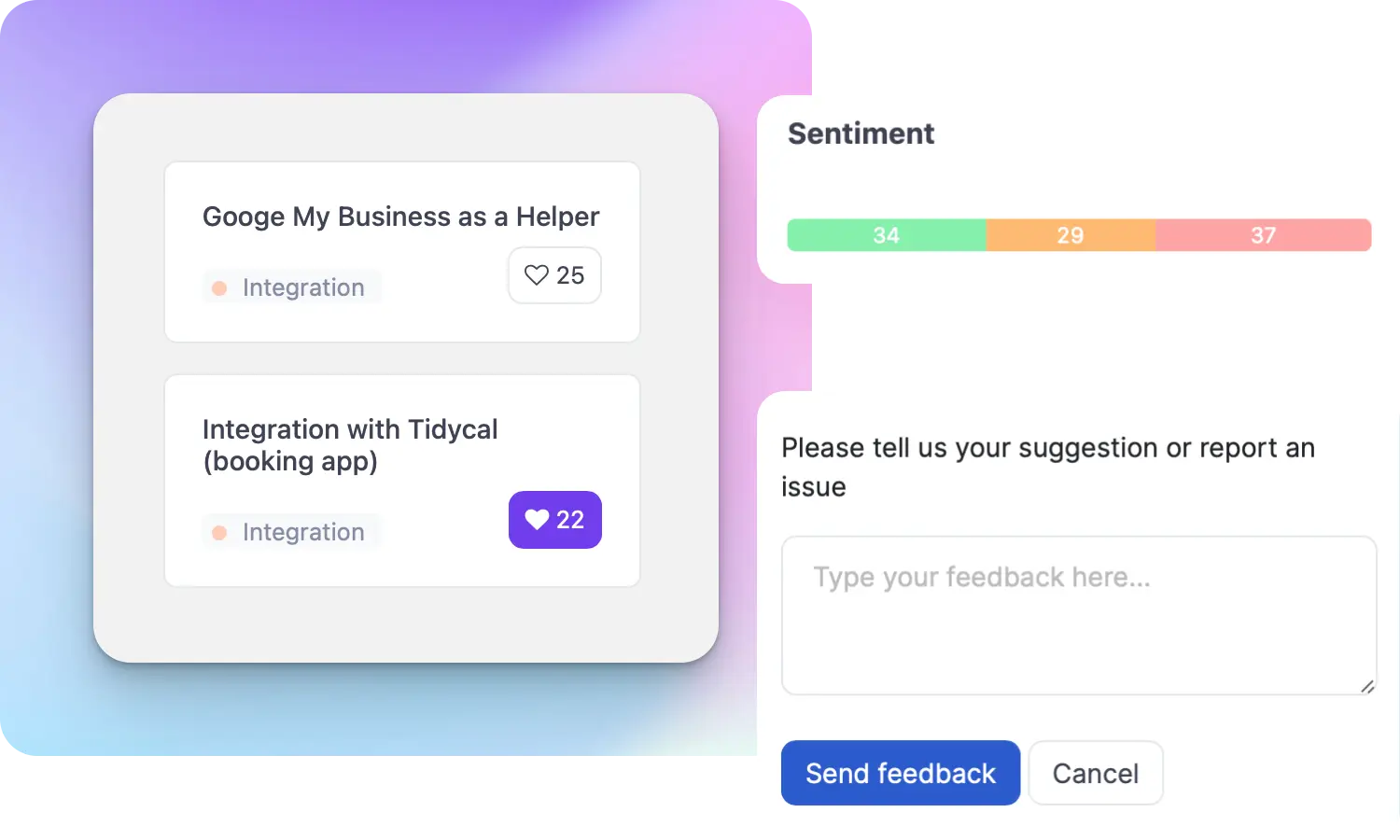What is a Feature Owner?

Ruben Buijs
A Feature Owner is responsible for overseeing the development, delivery, and success of specific features within a product, ensuring they align with user needs and product goals.
The role of a Feature Owner is essential in product management as they are responsible for a specific feature or set of features within a product. They act as the main point of contact and decision-maker for their assigned features throughout the product development lifecycle.
Examples
To better understand the concept of a Feature Owner, let's consider a few examples:
-
Social Media Platform: In a social media platform, the Feature Owner could be responsible for the "commenting" feature. They would gather user feedback, prioritize improvements, and work closely with the development team to ensure the feature meets user expectations.
-
E-commerce Website: In an e-commerce website, the Feature Owner might be in charge of the "search filters" feature. They would analyze user behavior, identify pain points, and collaborate with designers and developers to enhance the search functionality.
💡 Pro Tip
With ProductLift, you can assign and manage Feature Owners while ensuring that feedback from users directly influences feature improvements. Keep track of feature performance with ease. Try it now.
Feature Owner vs. Other Ownership Roles
While a Feature Owner focuses on individual features, there are other roles with different scopes of responsibility that also contribute to the product's success, such as Product Owners, Component Owners, and Function Owners.
Key Differences Between Ownership Roles
-
Product Owner: Oversees the entire product or large components, focusing on the overall product vision, strategy, and roadmap. The Product Owner sets priorities for the product backlog and ensures the product meets market demands.
-
Component Owner: Manages specific technical components of the system, such as services, APIs, or modules. They ensure that these components are reliable, scalable, and support the features effectively.
-
Function Owner: Oversees specific business functions or internal capabilities, ensuring they operate efficiently and contribute to the overall success of the product, but their focus is more on internal processes than user-facing features.
Comparison of Responsibilities
| Role | Scope | Responsibility | Collaboration |
|---|---|---|---|
| Product Owner | Entire product or large parts | Product strategy, roadmap, and market fit | Stakeholders, Feature Owners, development teams |
| Feature Owner | Individual features | Ensuring feature value and alignment with product goals | Product Owners, designers, developers, and QA teams |
| Component Owner | Technical components | Stability, scalability, and quality of technical parts | Engineers, Feature Owners, technical teams |
| Function Owner | Business functions | Operational efficiency of internal processes | Internal teams, Feature Owners, Product Owners |
Importance
The Feature Owner plays a crucial role in product management for several reasons:
-
Ownership and Accountability: By assigning a dedicated Feature Owner, there is clear ownership and accountability for specific product features. This helps ensure that someone takes responsibility for the success and quality of each feature.
-
User-Centric Focus: The Feature Owner acts as the voice of the user. They gather user feedback, conduct research, and analyze data to understand user needs and pain points. This user-centric approach ensures that the features align with user expectations and deliver value.
-
Effective Communication: The Feature Owner serves as the main point of contact for stakeholders, including the development team, design team, and management. They facilitate effective communication, ensuring everyone has a clear understanding of the feature requirements and goals.
How to Use It
To effectively use the concept of a Feature Owner, consider the following steps:
-
Identify Features: Identify the key features of your product that require dedicated ownership. These could be complex features, high-priority features, or features that require frequent updates.
-
Assign Feature Owners: Select individuals who have a deep understanding of the feature and are passionate about it. Assign them as Feature Owners, giving them the authority to make decisions and drive improvements.
-
Collaborate and Prioritize: Encourage collaboration between Feature Owners, product managers, designers, and developers. Prioritize the features based on user needs, business goals, and technical feasibility. Managing a complex set of features can be challenging. ProductLift simplifies this by helping you prioritize and keep track of the most impactful ones. Learn more.
-
Iterate and Improve: Continuously iterate and improve the features under the ownership of the Feature Owner. Gather user feedback, analyze data, and implement enhancements to deliver an exceptional user experience.
Useful Tips
Consider these tips when working with Feature Owners:
-
Empowerment: Empower Feature Owners by providing them with the necessary resources, authority, and support to make decisions and drive improvements.
-
Regular Communication: Establish regular communication channels with Feature Owners to discuss progress, challenges, and opportunities. This ensures alignment and helps address any issues promptly.
-
Collaborative Environment: Foster a collaborative environment where Feature Owners can work closely with cross-functional teams, such as developers, designers, and product managers. Encourage open dialogue and knowledge sharing.
-
Feedback and Recognition: Provide constructive feedback and recognize the efforts of Feature Owners. This motivates them to excel in their role and fosters a culture of continuous improvement.
Need a tool to support collaboration and gather valuable feedback from your team and users? ProductLift makes it easy to manage and improve features with seamless feedback loops. Sign up for free.
Related Terms
- Product Management
- Product Owner
- Agile Development
- User-Centric Design
- Product Roadmap
- Minimum Viable Product (MVP)
- User Feedback
- Feature Prioritization
- Stakeholder Management





